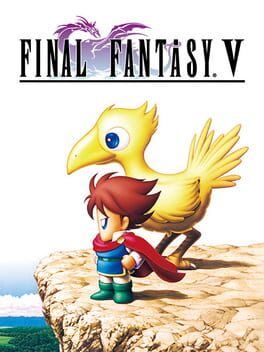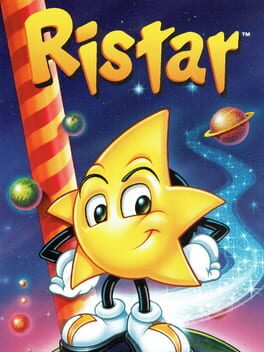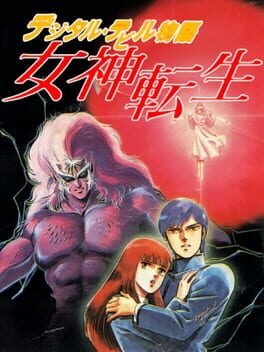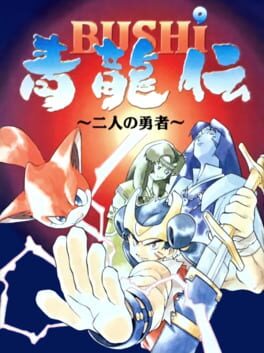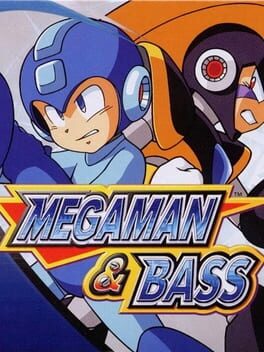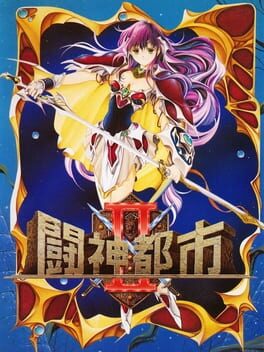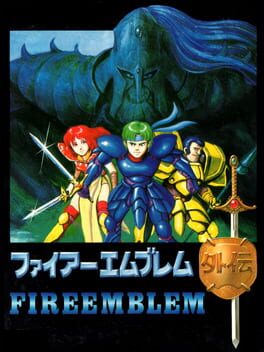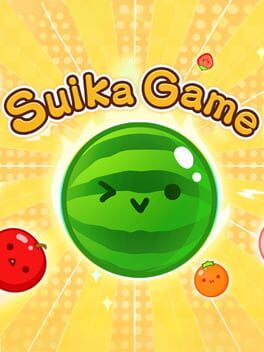178 Reviews liked by Lot0
Metroid
1986
The online discourse for this game is baffling. If I'd listened to the current consensus, then I would have avoided all but a handful of NES games, because they're apparently unfun, dated junk.
I decided to give the original Metroid a shot anyway, and I'm floored. This game is spectacular. Some of the music tracks are among the best I've ever heard. The atmosphere is as thick as butter. The world is enormous and labyrinthian. I felt a sense of vertigo uncovering side passage after side passage in areas I'd previously explored, realizing the map was at least double the size than I'd previously thought.
People are playing this game wrong. Don't use a guide, just read the manual. Be frustrated, and learn the game. This isn't a walk in the park. This is an expedition to a hostile alien fortress.
I decided to give the original Metroid a shot anyway, and I'm floored. This game is spectacular. Some of the music tracks are among the best I've ever heard. The atmosphere is as thick as butter. The world is enormous and labyrinthian. I felt a sense of vertigo uncovering side passage after side passage in areas I'd previously explored, realizing the map was at least double the size than I'd previously thought.
People are playing this game wrong. Don't use a guide, just read the manual. Be frustrated, and learn the game. This isn't a walk in the park. This is an expedition to a hostile alien fortress.
Rocket League
2015
Final Fantasy V
1992
this game gets really sold short just for not being as self serious as ff4 and not as grand as the series gets from 6 onward but it's a really spectacular game even outside of its stellar mechanics and practically outdoes ff4 in every way. definitely leans a bit more on comic relief than some people might like but there's some really great moments here and the cast is really strong, especially with galuf and bartz, and exdeath is undercut by fans for how interesting of an antagonist he is. neo exdeath is by far the coolest final boss design in this series to me other than safer sephiroth, and even if he's pretty stock standard on a surface level i think he deserves more credit as a villain. easily my favorite of the snes trilogy of final fantasy games and a game i can't recommend enough to fans of jrpgs
Ristar
1995
started to see the vision once I realized the grab (your only verb outside of jumping) gives you i-frames when you bounce off of whatever you're grabbing... pretty cool wrinkle on an otherwise plain set of mechanics. a lot of the game is carried by the dense mix of geometric terrain and organic outgrowths a la sonic; it's no surprise that much of this team got rolled into sonic team for NiGHTS into dreams the year after. said team really demonstrates their technical aptitude as well, with some stunning overlapping parallax on stages such as planet automaton and swirling line scrolling in the background of the itamor lunch fight. ristar emotes fluidly, with his walking scowl morphing into a grin and twirl upon defeating hard enemies. occasionally he'll even show a penchant for childlike play, such as in this snowball fight setpiece.
a first impression yields something a little dry on the gameplay front, with single-hit enemies and slow movement compounding into something more leisurely than interesting. thankfully around the halfway point the design veers into level-unique puzzles and setpieces. the one that stuck out to me the most was a series of areas in planet 4 involving babysitting this radio(?) item across various hazards in order to give to various birds who want them blocking your way. presages a klonoa style of puzzles built from manipulating objects in the environment rather than working with pre-defined aspects of the player's toolkit. near the end the game veers into some execution challenges as well, with mixed results. ristar's grab actually has a lot more going on to meets the eye: not only does he have the aforementioned i-frames, but he also gains a bit of height off his bounce, and he can hold onto some interactables indefinitely, swinging back and forth using his arms as a tether. the former gets used for a couple climbing challenges jumping between walls and swinging poles, which makes for some pleasant execution trials in the midst of the level-specific stuff. the latter never gets expanded on quite as much, probably because ristar maintains no momentum from his swinging when he releases due to bouncing back off of the fulcrum he's attached to, so actually manipulating the technique to achieve certain bounce angles is a bit unintuitive.
bosses are neat across the board; while somewhat cycle-based, the designers trickle a couple small points for attacking them before they're obviously wide-open. some of these (I'm thinking of specifically the bird boss on planet 4 and its array of non-linear projectiles) encourage the i-frame abuse in interesting ways. by the end of the game, however, it seems like they expect you to exploit it pretty openly to get anywhere, and by that point the bosses end up becoming grab spam. definitely makes the fights fly by quicker, but I find myself preferring the more cautious approach I took during the earlier bosses, although I would imagine upon a replay some of the same techniques apply.
a first impression yields something a little dry on the gameplay front, with single-hit enemies and slow movement compounding into something more leisurely than interesting. thankfully around the halfway point the design veers into level-unique puzzles and setpieces. the one that stuck out to me the most was a series of areas in planet 4 involving babysitting this radio(?) item across various hazards in order to give to various birds who want them blocking your way. presages a klonoa style of puzzles built from manipulating objects in the environment rather than working with pre-defined aspects of the player's toolkit. near the end the game veers into some execution challenges as well, with mixed results. ristar's grab actually has a lot more going on to meets the eye: not only does he have the aforementioned i-frames, but he also gains a bit of height off his bounce, and he can hold onto some interactables indefinitely, swinging back and forth using his arms as a tether. the former gets used for a couple climbing challenges jumping between walls and swinging poles, which makes for some pleasant execution trials in the midst of the level-specific stuff. the latter never gets expanded on quite as much, probably because ristar maintains no momentum from his swinging when he releases due to bouncing back off of the fulcrum he's attached to, so actually manipulating the technique to achieve certain bounce angles is a bit unintuitive.
bosses are neat across the board; while somewhat cycle-based, the designers trickle a couple small points for attacking them before they're obviously wide-open. some of these (I'm thinking of specifically the bird boss on planet 4 and its array of non-linear projectiles) encourage the i-frame abuse in interesting ways. by the end of the game, however, it seems like they expect you to exploit it pretty openly to get anywhere, and by that point the bosses end up becoming grab spam. definitely makes the fights fly by quicker, but I find myself preferring the more cautious approach I took during the earlier bosses, although I would imagine upon a replay some of the same techniques apply.
Baldur's Gate 3
2020
I've always felt that these open-world sandbox games that get praised endlessly nowadays were borderline nihilistic. If you can do anything, then nothing matters and nothing actually stands out. Nothing has weight and the game doesn't have anything to say.
The idea that more options within the framework of a game mean that it's "better" at depicting freedom is so silly and childish to me, since it will always be constructed within the limited frameworks of video games anyway. It's a childish understanding of what expression is.
For example, the recently released Baldurs Gate 3 bored me out of my mind, since you could literally do anything you wanted, and nothing actually matters. Which is supposed to represent its message about freedom or something?
And yet, all games that say "you can do anything you want" are ultimately self-contradictory. As video games are confined by their hardware etc., so are humans confined within the metaphysics of reality. They can only make their choices within the frameworks of reality.
Therefore, games should just try to present a creative framework to challenge the player with, and it's alright if that's heavily minimalized or constricted. After all, a game should do what's best to tell its message, instead of doing everything, and therefore, doing nothing.
The idea that more options within the framework of a game mean that it's "better" at depicting freedom is so silly and childish to me, since it will always be constructed within the limited frameworks of video games anyway. It's a childish understanding of what expression is.
For example, the recently released Baldurs Gate 3 bored me out of my mind, since you could literally do anything you wanted, and nothing actually matters. Which is supposed to represent its message about freedom or something?
And yet, all games that say "you can do anything you want" are ultimately self-contradictory. As video games are confined by their hardware etc., so are humans confined within the metaphysics of reality. They can only make their choices within the frameworks of reality.
Therefore, games should just try to present a creative framework to challenge the player with, and it's alright if that's heavily minimalized or constricted. After all, a game should do what's best to tell its message, instead of doing everything, and therefore, doing nothing.
I don't know if this was Game Freak's first game, but it has all the hallmarks of too much ambition. Some very cool ideas, from strategy based battles with action-rpg elements and platforming, to an overhead JRPG style outside of the action. I don't think it holds together super solidly, but it's a valiant effort, especially compared to a lot of simpler games for the SFC/SNES.
Mega Man & Bass
1998
This game fucks so hard. Notorious for some, I went in really expecting to hate it especially on my first playthrough with Mega Man but this really blew me out of the water with how good it is. It is challenging as hell, and definitely feels like a step up on difficulty from 7 and 8 before it, but it really hits that Mega Man sweet spot of feeling frustrating but still beatable. For most of the runtime anyway. The SNES Mega Man games really have a habit of being incredibly great right up until the final bossfights. This gauntlet isn't really as bad as Wily Machine 7 if I think about them, but I think I hated them a little more in the moment due to the sheer quantity of challenging bosses this endgame has. Two playable characters who both can get through the story with different strengths and weaknesses really gets a lot of points for me though. I haven't given 10 a fair shake as each character, but in my humble opinion right now this is the best multi-character setup in the classic series. One of the best, despite what people will tell you!
Toushin Toshi II
1994
Super Mario 64
1996
el b3313 es mejor castillo pero el final de mario 64 -> felicidad pura, majia potajia, peak
a veces pienso que en cuanto a sensibilidad estos de nintendo fueron prácticamente insuperables en los 80s y 90s dentro de este medio. cosas tan pequeñitas como ayudar o jugar con los npcs en tus viajes para que luego los créditos tal cual álbum de fotos te recuerden a los amigos que encontraste en el camino, y terminar con la despedida, de mario, la princesa, los kinopio (y por consiguiente el juego, como un amigo) despidiéndose alzando los brazos como si de alguien partiendo en un viaje lejano en tren o barco se tratase mientras la cámara lentamente se aleja al cielo
"can you hear the princess calling?"
perdón por el post webon después de ponerme a shorar con el final del juego por décima vez, para mañana recapacito
a veces pienso que en cuanto a sensibilidad estos de nintendo fueron prácticamente insuperables en los 80s y 90s dentro de este medio. cosas tan pequeñitas como ayudar o jugar con los npcs en tus viajes para que luego los créditos tal cual álbum de fotos te recuerden a los amigos que encontraste en el camino, y terminar con la despedida, de mario, la princesa, los kinopio (y por consiguiente el juego, como un amigo) despidiéndose alzando los brazos como si de alguien partiendo en un viaje lejano en tren o barco se tratase mientras la cámara lentamente se aleja al cielo
"can you hear the princess calling?"
perdón por el post webon después de ponerme a shorar con el final del juego por décima vez, para mañana recapacito
Fire Emblem Gaiden
1992
Fire Emblem 2 is a totally different game than any other FE, and has an incredible amount of unrealized ambition that is fascinating to play through. In many ways it's like they just created a standard JRPG first and overlayed FE characters and rules on top of it.
Sometimes a game thoroughly engrosses you and pushes you to a limit, and the last several nights I've been staying up late, addicted to pushing through as far as I could. At 300% speed and with most maps taking less than 10 minutes, I was on the climb and constantly optimizing my strategy. The game benefits by fast forwarding in long sittings, and I think if I took my time with it more I would not have as good of a time.
The game is repetitive and the maps aren't very thoughtfully designed (most are open battlefields), but I felt like it forced me to really understand my team's strengths and weaknesses. Even though accuracy/dodge felt punishing at times, the lack of vulneraries and inventory, surprising difficulty spikes, and not being able to see where you're deploying units, this game really spoke to me.
I love the magic system of this game, every spell costs your healers and sages EXP, but it also costs the enemies EXP so sometimes they will dig their own grave for you. Getting to customize your team felt really good, and every time you gain a promotion it feels significant. The stat growths in general are pretty small though, and I did have some early game stars fall behind later on. Having the option to return to a shrine or cave to grind did help, as there were a few times I was close to promotion with a key player and decided to just stick around until they earned it.
The game's story is great, and I love just hanging out in the different towns. Some of the storylines, such as Zeke and Tatiana said a lot very succinctly. As with any fire emblem game, much of the storytelling happens on a personal level with your units. I lost a few members of my team in dramatic fashion. Mathilda started great but couldn't keep up, and fell to the zombie dragon swarm. Atlus was ambushed by summons and I lost him in act 4. Even up to the last battle, I lost my dependable scout Robin in a very heartbreaking but attempt to move quickly to the final boss.
But I also had some characters really surprise me. My sniper Python was pretty useless most of the game until promoting to Bow Knight, and saved us in countless scraps. I was having a hard time feeding Est enough EXP to promote her, but once I did, the whitewing sisters made Celica's route a snap. Jennie and May also ruled. While Alm was stuck in the volcano, Clair almost solo killed 20 dragons.
Once Tatiana gained Fortify, the most broken healing spell in the game, I had mathematically won by teaming her with Silk. From there I just enjoyed melting away any enemies that got in my way like butter. The final showdown was truly fantastic. This game gave me a high in a way that I haven't felt in a long time.
Sometimes a game thoroughly engrosses you and pushes you to a limit, and the last several nights I've been staying up late, addicted to pushing through as far as I could. At 300% speed and with most maps taking less than 10 minutes, I was on the climb and constantly optimizing my strategy. The game benefits by fast forwarding in long sittings, and I think if I took my time with it more I would not have as good of a time.
The game is repetitive and the maps aren't very thoughtfully designed (most are open battlefields), but I felt like it forced me to really understand my team's strengths and weaknesses. Even though accuracy/dodge felt punishing at times, the lack of vulneraries and inventory, surprising difficulty spikes, and not being able to see where you're deploying units, this game really spoke to me.
I love the magic system of this game, every spell costs your healers and sages EXP, but it also costs the enemies EXP so sometimes they will dig their own grave for you. Getting to customize your team felt really good, and every time you gain a promotion it feels significant. The stat growths in general are pretty small though, and I did have some early game stars fall behind later on. Having the option to return to a shrine or cave to grind did help, as there were a few times I was close to promotion with a key player and decided to just stick around until they earned it.
The game's story is great, and I love just hanging out in the different towns. Some of the storylines, such as Zeke and Tatiana said a lot very succinctly. As with any fire emblem game, much of the storytelling happens on a personal level with your units. I lost a few members of my team in dramatic fashion. Mathilda started great but couldn't keep up, and fell to the zombie dragon swarm. Atlus was ambushed by summons and I lost him in act 4. Even up to the last battle, I lost my dependable scout Robin in a very heartbreaking but attempt to move quickly to the final boss.
But I also had some characters really surprise me. My sniper Python was pretty useless most of the game until promoting to Bow Knight, and saved us in countless scraps. I was having a hard time feeding Est enough EXP to promote her, but once I did, the whitewing sisters made Celica's route a snap. Jennie and May also ruled. While Alm was stuck in the volcano, Clair almost solo killed 20 dragons.
Once Tatiana gained Fortify, the most broken healing spell in the game, I had mathematically won by teaming her with Silk. From there I just enjoyed melting away any enemies that got in my way like butter. The final showdown was truly fantastic. This game gave me a high in a way that I haven't felt in a long time.
Ristar
1995
I love Ristar. I don't think you could make Ristar again. Part of what makes this one special is that there's only one of it. (do we count the 8-bit version...?) Nowadays, you'd probably get some 2.5D reimagining that mostly just recycles a buncha stuff from the original and calls it a day. And it'd be servicable for one playthrough, but I wouldn't come back to it like I would come back to this one over and over again.
Ristar, for its short length, emanates a level of passion and variety akin to something like Sonic 3 & Knuckles. Fitting, as the Ristar team would go on to join Sonic Team after this game released (which is why there's a misconception that this was developed by sonic team). Every world's broken up into two platforming stages and a boss, each with a new mechanic, a new bop of a song, rarely overstaying its welcome and always a marvel of spritework to appreciate. Controls are simple, you move and you stretch your arms out for a variety of context-sensitive acrobatics, including using enemies as climbable platforms, flinging yourself off poles/handles, and climbing up walls as one of the more advanced techniques. If that one small part of your brain lights up everytime a game lets you swing across something to cross a gap, then I'm happy to report that with some practice on hand, Ristar is a Tarzan game in disguise. But even without taking full advantage of these abilities, the game has plenty of mini-bosses and hidden nooks and crannies that reward you with lifes, or even extra bonus stages that feature unique mini platforming challenges for you to overcome, and perhaps take advantage of to practice your moveset.
Game only gets half a star off for the 1st music world stage, which has something akin to an escort mission that I personally found it went a little against the rest of the game's flow. Everything else points to Ristar being a sort-of hidden gem amongst the Genesis library. Coming out at the tail end of its life cycle, this is one of the games that understood the Genesis best. And in a way, as the Saturn approached and overshadowed this game's release, this might very well have been the last glowing star in Sega's track record that burned out.
Ristar, for its short length, emanates a level of passion and variety akin to something like Sonic 3 & Knuckles. Fitting, as the Ristar team would go on to join Sonic Team after this game released (which is why there's a misconception that this was developed by sonic team). Every world's broken up into two platforming stages and a boss, each with a new mechanic, a new bop of a song, rarely overstaying its welcome and always a marvel of spritework to appreciate. Controls are simple, you move and you stretch your arms out for a variety of context-sensitive acrobatics, including using enemies as climbable platforms, flinging yourself off poles/handles, and climbing up walls as one of the more advanced techniques. If that one small part of your brain lights up everytime a game lets you swing across something to cross a gap, then I'm happy to report that with some practice on hand, Ristar is a Tarzan game in disguise. But even without taking full advantage of these abilities, the game has plenty of mini-bosses and hidden nooks and crannies that reward you with lifes, or even extra bonus stages that feature unique mini platforming challenges for you to overcome, and perhaps take advantage of to practice your moveset.
Game only gets half a star off for the 1st music world stage, which has something akin to an escort mission that I personally found it went a little against the rest of the game's flow. Everything else points to Ristar being a sort-of hidden gem amongst the Genesis library. Coming out at the tail end of its life cycle, this is one of the games that understood the Genesis best. And in a way, as the Saturn approached and overshadowed this game's release, this might very well have been the last glowing star in Sega's track record that burned out.
Super Mario Bros.
1985
Suika Game
2021
Funciona en un equilibrio entre dos mundos.
Un mundo frío y calculado, de gestionar el escaso espacio de la caja, de tomar decisiones constantes sujetas a la siguiente fruta aleatoria a añadir, de planificación y de adaptaciónn ante los imprevistos.
Y un mudo físico, vibrante, de jugueteo en el deslizamiento de las frutas, el roce y la presión entre si, las cerezas saliendo disparadas y el equilibrio inestable de los círculos apelotonados unos sobre otros.
Dos mundos opuestos y complementarios. Cabeza y corazón. Compactado en partidas de 10-20 minutos, siempre distintas, siempre divertidas, tanto para pasar el rato como para strimear delante de miles de personas. Que juegazo tío.
Un mundo frío y calculado, de gestionar el escaso espacio de la caja, de tomar decisiones constantes sujetas a la siguiente fruta aleatoria a añadir, de planificación y de adaptaciónn ante los imprevistos.
Y un mudo físico, vibrante, de jugueteo en el deslizamiento de las frutas, el roce y la presión entre si, las cerezas saliendo disparadas y el equilibrio inestable de los círculos apelotonados unos sobre otros.
Dos mundos opuestos y complementarios. Cabeza y corazón. Compactado en partidas de 10-20 minutos, siempre distintas, siempre divertidas, tanto para pasar el rato como para strimear delante de miles de personas. Que juegazo tío.
Suika Game
2021
Easy to see as an absolute opposite of Tetris (and descendants) by design. The usual squared and stiff pieces here are rounded fruits that will never stop moving, not only after you drop them but as long as anything is moving along on the board. The same can be said about how both types of games manage time. The ever increasing urge to make decisions in Tetris is not explicitly here, you can take all the time in the world to decide every single move, and yet it is a game where time is fundamental. Instead of dropping pieces of fruit fast because the system forces you to, you make the drops fast (or not) because the board can and will go out of control thanks to the living chain reaction of every collision.
It could be argued that by not taking the, by now quite trite, increasing speed pressure, Suika Game isn’t that good at building tension as the game goes on. Yet, the compromise on a spatial and physical game that can never be erased, only temporarily reduced, is enough to make every cherry count until the very end. There is the notable exception of being able to mix together two watermelons consistently, though humanity is still not there to behold such a level of refinement, addiction or both.
It could be argued that by not taking the, by now quite trite, increasing speed pressure, Suika Game isn’t that good at building tension as the game goes on. Yet, the compromise on a spatial and physical game that can never be erased, only temporarily reduced, is enough to make every cherry count until the very end. There is the notable exception of being able to mix together two watermelons consistently, though humanity is still not there to behold such a level of refinement, addiction or both.


